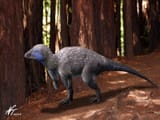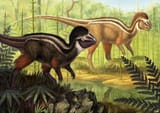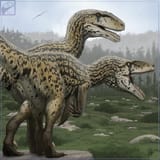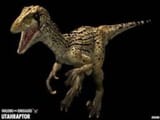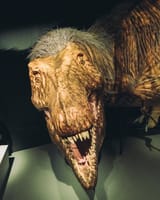>>716224217
>>716224370
While Kulindadromeus is often cited as a "feathered ornithischian," its status as definitive proof that feathers were widespread across all dinosaurs is highly debatable.
> Ambiguity in the Fossil Evidence
The structures found on Kulindadromeus are not true feathers by avian standards. They include filamentous structures and ribbon-like projections, which differ significantly from the complex branching feathers found in theropods and modern birds. Some researchers argue these could be collagen fibers or decay artifacts rather than feathers, a view supported by taphonomic studies questioning how soft tissues degrade and fossilize.
>Lack of Phylogenetic Support
Kulindadromeus is a basal ornithischian, far removed from the theropod lineage that led to birds. If feathers were truly ancestral to all dinosaurs, we would expect to see more widespread feather impressions across other ornithischians and sauropods. But we don’t. Most of these groups are consistently found with scaly skin impressions, not feather-like structures.
>Exceptional Preservation Bias
The fossil site where Kulindadromeus was found, Siberia's Zeya-Bureya Basin, is a Lagerstätte, meaning it has extraordinary preservation conditions. This creates a sampling bias: soft tissues like filaments may only fossilize under rare conditions. Thus, interpreting this isolated case as proof of widespread feathering is an overreach.
>Alternative Evolutionary Interpretations
The so-called "protofeathers" could be an example of convergent evolution, structures that look like feathers but evolved independently. Insects, pterosaurs, and mammals all developed hair- or fiber-like coverings for thermoregulation or display. Kulindadromeus may represent a similar case, not evidence of a shared feathered ancestry with theropods.


